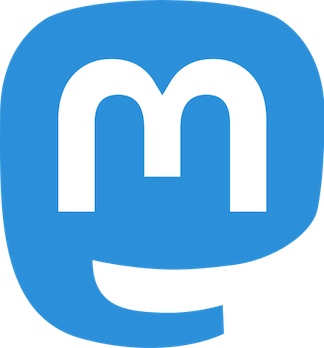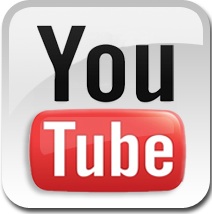This
section of my web site is no longer updated. The
last update was in early 2023.
This page is part of a 11-part guide on preventing folklore,
rumors (or rumours), urban myths and organized misinformation
campaigns from interfering with development & aid/relief
efforts, and government initiatives regarding public health, the
environment, etc.
It is not a stand-alone page. It
should be read as part of the entire guide.
This is the link to the introduction
and index for the other pages in this guide.
More Resources
If a URL no longer works, try searching for the title on
Google, or look at the source
code for this page and cut and paste the desired URL into
Archive.org
- BioCaster
was an ontology-based text mining system for detecting and
tracking the distribution of infectious disease outbreaks from
linguistic signals on the Web. The system continuously
analyzed documents reported from over 1700 RSS feeds,
classified them for topical relevance and plots them onto a
Google map using geocoded information. Archived versions of
the system can be seen by searching for www.biocaster.org
on archive.org.
The tool no longer exists, but provides an excellent example
of how technology could be used - a similar tool could be
developed to monitor Twitter, for instance.
- The United Nations Children’s Fund (UNICEF)
Communication for Development (C4D) web site section
shares information and materials any initiative can use to
help educate individuals and communities about how to prevent
the spread of the Ebola virus and how to care for those
already affected. Materials include:
- Fact Sheets – For example, key messages, brochures with
facts, and slide presentations.
- Visual materials like a poster of signs and symptoms and
a flip chart for health communicators.
- Audio materials like songs and public service
announcement (PSA) spots.
- Training materials.
- Guidelines for community volunteers.
- Planning Documents – For example, a West and Central
Africa (WCARO) strategy framework model.
- Other Tools – the Behaviour Change Communication In
Emergencies: A Toolkit, Essentials for
Excellence – Research, Monitoring and Evaluating
Strategic Communication, and the UNICEF
Cholera Toolkit.
- The Communications
Initiative is compiling information from a range of
organizations regarding how
to address communications challenges regarding Ebola.
It’s updated frequently, and it’s a must-read for any
development communications or public health communications
specialist.
- In a study published in January 2016 in Proceedings of the National
Academy of Sciences , researchers examined the
diffusion of misinformation on Facebook, examining the spread
of both conspiracy theories, or “alternative, controversial
information, often lacking supporting evidence,” (for example,
the idea that vaccines can cause autism) and scientific news.
They found that the spread of misinformation online generally
takes place within clusters of people who tend to consume the
same types of information - they become “echo chambers,”
sharing only the information that further solidifies their
beliefs and polarizes communities that community from science
and facts. They found that highly segregated communities, or
echo chambers, existed around each type of content, and then
content tends to circulate only within its own community.
Community members are engaged in confirmation bias, the tendency of
individuals to pay attention to or believe information that
confirms the personal values and beliefs they already hold,
rather than allowing their beliefs to be changed by new
information. Robert Brulle, a professor of sociology and
environmental science at Drexel University, says in this
article about the study, “Individuals want to maintain
their self-identity and self-image.They’re not going to read
something that challenges their values, their self-worth,
their identity, their belief system.”
- There is research
that shows that overwhelming someone with facts can actually
make them double-down on the misinformation they believe.
A study described in a
paper by Schwarz et al, found that a flyer by the Center
for Disease Control (CDC) in the USA containing "facts and
myths" about vaccines increased intentions to vaccinate
immediately but had the opposite effect after only half an
hour - when the participants began remembering the myths as
facts. This article "I
Don't Want To Be Right" in The NewYorker by Maria Konnikova agrees, and
notes, "The longer the narrative remains co-opted by prominent
figures with little to no actual medical expertise - the Jenny
McCarthys of the world - the more difficult it becomes to find
a unified, non-ideological theme. The message can't change
unless the perceived consensus among figures we see as opinion
and thought leaders changes first." The Konnikova article
cites numerous articles about people's perceptions about facts
and is worth of a read - and a reread.
- Culture
and Behaviour in Mass Health Interventions: Lessons from the
Global Polio Eradication Initiative. "Interpreting
resistance to vaccination as essentially religio-cultural
marginalises an understanding of resistance as the rational
and strategic response by households and communities to
systematic conditions of inequity and exclusion." This is the
central thesis advanced in this paper, which draws on a
desk-based review of literature, real-time epidemiological
evidence, and the author's own field-based experience working
with the Global Polio Eradication Initiative (GPEI) over
periods since 2001 in Nigeria, India, Pakistan, and
Afghanistan. Noting that the definitive eradication of polio
worldwide now hinges on maximising household oral polio
vaccine (OPV) acceptance and delivery in just a few endemic
countries, author Sebastian A.J. Taylor cites evidence
suggesting that, "while vaccinator performance generally, and
physical access related to security, create blockages in the
vaccination supply-side, unwillingness to be vaccinated by
small groups of households and communities constitutes the
principal demand-side barrier." This resistance, "often
occurring in areas with substantial Muslim population, has
been associated with fear and rumour fuelled by ignorance", as
well as religious objection, which Taylor describes as
"problematically merged in a religio-cultural interpretation
of resistance as a kind of Islamic obscurantism." Yet, he
observes, attitudes about the polio programme "appear to vary
substantially within small geographic areas. Rather than being
a matter of common belief, public orientation appears to be
shaped by a combination of religio-cultural and more localised
socio-economic and political factors - in particular, the
potentially aggressive nature of mass vaccination, and the
perceived under-supply of other development goods." The
full paper is available by subscription only.
- Debunking
Handbook, by John Cook, Global Change Institute,
University of Queensland, and Stephan Lewandowsky, School of
Psychology, University of Western Australia. "Debunking myths
is problematic. Unless great care is taken, any effort to
debunk misinformation can inadvertently reinforce the very
myths one seeks to correct. To avoid these 'backfire effects',
an effective debunking requires three major elements. First,
the refutation must focus on core facts rather than the myth
to avoid the misinformation becoming more familiar. Second,
any mention of a myth should be preceded by explicit warnings
to notify the reader that the upcoming information is false.
Finally, the refutation should include an alternative
explanation that accounts for important qualities in the
original misinformation." Here's an excellent
review and summary of the book.
- When
anecdotes, testimonials & urban legends are used to
counter science -e.g. in public health initiatives.
Offers advice on how to How to recognise this tactic and lots
of examples of it happening, particularly in mass media. It
doesn't offer concrete steps on how to address it, but it does
help you understand it more, and the examples might be good to
use in a training of public health care workers and others.
- "Why
Do Many Reasonable People Doubt Science?" An article
from National
Geographic that does an outstanding job of explaining
why people trust their gut or what they hear from friends
rather than science. "Even when we intellectually accept
these precepts of science, we subconsciously cling to our
intuitions... as we become scientifically literate, we repress
our naive beliefs but never eliminate them entirely. They lurk
in our brains, chirping at us as we try to make sense of the
world. Most of us do that by relying on personal experience
and anecdotes, on stories rather than statistics."
- "Why
Facts Don’t Change Our Minds New," a review in The
New Yorker about discoveries about the human mind that
show the limitations of reason in changing minds, as detailed
in three books: The Enigma of Reason, The
Knowledge Illusion and Denying to the Grave.
- "Researchers
have 3 tips to help journalists debunk misinformation,"
an article that summarizes research by Brendan Nyhan, a
professor at Dartmouth, and Jason Reifler, a lecturer at the
University of Exeter, called "Which
Corrections Work," about specific advice for how
journalists can best correct misinformation. That advice is
coupled with related experiments they conducted to reinforce
the tips. October 2013.
- "The
Backfire Effect: The Psychology of Why We Have a Hard Time
Changing Our Minds," a review by Maria Popova of Brain
Pickings regarding the book You
Are Now Less Dumb: How to Conquer Mob Mentality, How to
Buy Happiness, and All the Other Ways to Outsmart Yourself
 by
David McRaney.
by
David McRaney.
- Pseudoscience
and conspiracy theory are not victimless crimes against
science. "What’s the harm in applying alternative
medicine to treat cancer? Why should others care if I don’t
vaccinate my children? Such decisions are all too often based
on a poor understanding of how science works – and usually
guided by someone’s commercial interest... When some people
are taken as 'authorities' and their claims, however wacky,
believed, then the subsequent decisions that millions of
people may take could harm them or even bring a premature end
to their lives."
- On the reception and detection
of pseudo-profound bullshit, a paper by Gordon
Pennycook, James Allan Cheyne, Nathaniel Barr, Derek J.
Koehler, and Jonathan A. Fugelsang, looks at how people will
believe "seemingly impressive assertions that are presented as
true and meaningful but are actually vacuous." In the study, research participants
were presented with pseudo-profound
bullshit statements consisting of buzzwords randomly
organized into statements with syntactic structure but no
discernible meaning (e.g., “Wholeness quiets infinite
phenomena”). Across multiple studies, the propensity to judge
these statements as profound was associated with a variety of
conceptually relevant variables (e.g., intuitive cognitive
style, supernatural belief). "These results support the idea
that some people are more receptive to this type of bullshit
and that detecting it is not merely a matter of indiscriminate
skepticism but rather a discernment of deceptive vagueness in
otherwise impressive sounding claims. Our results also suggest
that a bias toward accepting statements as true may be an
important component of pseudo-profound bullshit receptivity."
- The death of a teen in 2008 in Ukraine was wrongly blamed on
his vaccination for measles and rubella, emboldening
anti-vaccine activists who stoked the public with
misinformation and social media. Parents lost confidence and
vaccination rates plummeted. A coalition of corrupt importers
were also pocketing exorbitant markups for medicines, and when
UNICEF initiated international procurement in response, the
companies countered the threat to their lucrative schemes with
waves of misinformation aimed at confusing parents, dividing
Ukraine's own institutions of health governance, and keeping
the international community at bay. UNICEF, WHO, Rotary and
others, working with Ukraine health ministry allies, have
worked hard to successfully counter vaccine misinformation,
and as of 2017, they are making great progress. More
in this brief article on the Communication Initiative web
site.
- "5
tips for verifying citizen footage that every journalist
should know," by Madeleine Bair
for Muckrack.com.
- Newsrooms
Building Online Tools Skeptics Can Use
"We need online tools against bunk now more than ever. With
the rise of social media (Twitter, Facebook et al.) there is
an ever increasing ability for falsehoods such as rumors,
hoaxes and misinformation to spread rapidly online. Many of
these relate to news or political issues that may not directly
concern some skeptics... Facing a huge load of work, these
fact checkers have adopted new electronic methods including
online research, custom software and crowdsourcing. At
the same time, the newspaper industry has been looking for
ways to evolve their business to replace the loss of
traditional revenue and adapt to the digital world."
- Training for
journalists (and anyone) on spotting misinformation, from
First Draft
These online courses, toolkits and resources are designed to
help both journalists and the public build expertise and stay
one step ahead of misinformation. From First Draft. There is
an Essential Guides book series for journalists reporting on
misinformation, a tool for you to test your online sleuthing
skills with the First Draft verification challenge, learn more
about mobile-friendly verification and monitoring tools and
more.
- Health
Literacy From A to Z: Practical Ways to Communicate Your
Health Message, by Helen Osborne. This has used as
a textbook in Seminar in Health Literacy at Tufts University
School of Medicine. "Learn the key principles and strategies
of effective health communication presented in a simple,
informal manner by one of the nation’s leading experts in
health literacy...Whether you are a physician, nurse,
pharmacist, allied health professional, case manager, public
health specialist, practice manager, health care educator,
student or family caregiver this book is for you." This book
won the 2012 New England Chapter of the American Medical
Writers Association Will Solimene Award for Excellence in
Medical Communication. It includes a sample syllabus and slide
presentations.
- The Digital
Resource Center, part of Center for News
Literacy at the Stony Brook
University School of Journalism, offers the material
from its
14-week News Literacy course for free, online. Each
lesson - slide presentations, associated media, lecture notes
and recitation materials - stands alone and can easily be
integrated into your own program.
- The University of Bristol School of Experimental Psychology
has a list of faculty at various institutions they consider to
be global
experts on debunking of misinformation. The portal
provides contact details of researchers from across multiple
disciplines who are experts on social media and internet,
debunking of misinformation, conspiracy theories, lack of
trust science communication and science denial. At the time
this item is being added to my list, it has 77 people listed
on it.
- Presentations at the Technical Advisory Group meeting on
Communication for Polio Eradication in Nigeria, Niger and
Congo, by UNICEF and ministries of health for different
countries, Harare, November 2006
- Presentations at the UNICEF Afghanistan polio communication
review meeting in Kabul, September 25 - 27, 2007
- Radio Australia interview with Kym Smithies of the UNDP
mission in East Timor
- Essays by Etherton, M. , Ganguly, S. (2004) and
Marlin-Curiel, S. in Theatre and Empowerment: Community
Drama on the World Stage, Boon, R. and Plastow, J.
(eds.), University of Leeds.
- "Health
Care Debate Based on Total Lack of Logic", by Jeanna
Bryner, LiveScience.com
- "U.S. Team in Baghdad Fights a Persistent Enemy: Rumors" by
Thom Shanker, March 23, 2004, The New York Times
- CNN story, Liberia
tries pop song, billboards to calm census fears, from
March 20, 2008.
- Facilitators
to aid anti-polio campaign in Tribal Areas (in
Afghanistan), from the Daily Times, January 16, 2009
- Informal interviews by the author with various aid workers
- First-hand experience by the author, Jayne Cravens
(if a URL no longer works, try searching for the title on
Google, or look at the source
code for this page and cut and paste the desired URL into
Archive.org)
Also see:
A website that verifies or dispels some of the Internet’s most
pervasive rumors about ANY subject: Emergent.info,
founded by researcher Craig Silverman of Columbia University’s
Tow Center for Digital Journalism. "It presents real rumors and
real data about them in a visual format that hopefully helps
communicate how a given claim is evolving, and whether media
reports confirm, deny or merely report the claim. After enough
evidence emerges one way or another, we mark the claim as either
true or false."
Verification
Handbook: A Definitive Guide to Verifying Digital Content for
Emergency Coverage "In a crisis situation, social networks
are overloaded with situational updates, calls for relief,
reports of new developments, and rescue information. Reporting
the right information is often critical in shaping responses
from the public and relief workers; it can literally be a matter
of life or death." Authored by journalists from the BBC,
Storyful, ABC, Digital First Media, and other verification
experts, this is a resource for journalists and aid providers
that offers tools, techniques, and step-by-step guidelines for
how to deal with user-generated content (UGC) during
emergencies. Noting that rumours and misinformation can cause
people to invent and repeat questionable information in
emergency situations due to uncertainty and anxiety - now
amplified due to new technology like social media - the resource
provides best practice advice on how to verify and use
information provided by the crowd, as well as actionable advice
to facilitate disaster preparedness in newsrooms. Case studies
are included; for example: "Separating Rumor From Fact in a
Nigerian Conflict Zone".
Towards
Polio Communication Indicators: A Discussion Document,
February 2008 from The
Communication Initiative (scroll down the page to download
the document; the summary doesn't really capture the important
points of this document, IMO).
The
Debunking Handbook, a guide to debunking myths, by John
Cook and Stephan Lewandowsky. This is a summary of various
research literature, offering practical guidelines on the most
effective ways of reducing the influence of misinformation. The
Handbook will be available as a free, downloadable PDF at the
end of its 6-part blog series (which is still underway as of
November 2011).
Logical
Fallacies and the Art of Debate. This is actually a web
page for competitive debaters. But its explanation of logical
fallacies is the best I've found anywhere, and those ways of
arguing a point are something public health educators and other
communicators should understand!
Building Trust in Media in South East Europe
and Turkey. Together with partners and with financial
support from the European Union, this UNESCO project "seeks to
strengthen freedom of expression, access to information, free,
independent and pluralistic media, ensuring that journalists and
media are key drivers for democratic, sustainable and peaceful
development in the region." The project is being implemented in
Albania, Bosnia and Herzegovina, the Former Yugoslav Republic of
Macedonia, Montenegro, Serbia and Turkey, as well as in Kosovo.
The project is focused on (1) Reinforcing national media
accountability mechanisms, (2) Increasing media internal
governance and (3) Strengthening Media and Information Literacy.
The project is meant to last 1 January 2016 through 31 December
2018 - if the website disappears, type the URL into archive.org.
The tag used on social media for this initiative is #TrustinMediaSEE. Associated Twitter
accounts are @MILCLICKS and @MILCLICKSsee.
WikiWash, a more
attractive interface to the revision history feature of Wikipedia.
News events are often recorded quite quickly in Wikipedia
articles, but these rapid edits can be a source of bias or spin
if not scrutinized. WikiWash allows easy WYSIWIG browsing of
recent edits to any article to make such scrutiny easier.
Rumor
Psychology: Social and Organizational Approaches by Nicholas DiFonzo. The
contributing authors "investigate how rumours start and spread,
the accuracy of different types of rumour, and how rumours can
be controlled, particularly given their propagation across media
outlets and within organisations." I confess I haven't read
this, but based on what is summarized online, I can't imagine it
isn't a good resource for further exploring this issue.
by Nicholas DiFonzo. The
contributing authors "investigate how rumours start and spread,
the accuracy of different types of rumour, and how rumours can
be controlled, particularly given their propagation across media
outlets and within organisations." I confess I haven't read
this, but based on what is summarized online, I can't imagine it
isn't a good resource for further exploring this issue.
"Rumors
and Realities: Making Sense of HIV/AIDS Conspiracy Narratives
and Contemporary Legends". By Jacob Heller. American
Journal of Public Health: January 2015, Vol. 105, No. 1,
pp. e43-e50. I confess I haven't read this, as it is behind a
pay wall, but the abstract indicates it is a good resource for
further exploring this issue.
Rumor
Mills: The Social Impact of Rumor and Legend (Social
Problems and Social Issues) , a book edited by by Chip
Heath, Veronique Campion-Vincent, and Gary A. Fin, includes this
chapter: "How Rumor Begets Rumor: Collective Memory, Ethnic
Conflict, and Reproductive Rumors in Cameroon." Again, I confess
I haven't read this, but based on what is summarized online, I
can't imagine it isn't a good resource for further exploring
this issue.
, a book edited by by Chip
Heath, Veronique Campion-Vincent, and Gary A. Fin, includes this
chapter: "How Rumor Begets Rumor: Collective Memory, Ethnic
Conflict, and Reproductive Rumors in Cameroon." Again, I confess
I haven't read this, but based on what is summarized online, I
can't imagine it isn't a good resource for further exploring
this issue.
Lesson
plan about recognizing fake news. It's from KQED, a public
radio and TV station in the San Francisco, California area.
"Students will analyze the problems and potential consequences
associated with the spread of fake news." and "Students will
identify and evaluate ways to avoid fake news in social and
academic settings. "
Doctors
have decades of experience fighting “fake news.” Here’s how
they win. Some lessons from the health community’s long
battle with misinformation. Terrific, very practical advice,
with examples of where it's worked.
What I'm also wondering: are their any efforts in developing
and transitional countries similar to the myth-busting Straight
Dope column by Cecil Adams in the USA? Or truthorfiction.com?
Or hoax-slayer.com?
Or MythBusters?
Or Adam Ruins Everything? If you know of
such, please contact me.
Even more reading
Wikipedia actually has some good pages that provide an overview
of these and related subjects:
Back to the
first page of this
resource on preventing misinformation from interfering with
development and aid initiatives.
Back to my development resources main page.
Quick Links
 my home
page
my home
page
 my
consulting services & my workshops
& presentations
my
consulting services & my workshops
& presentations
 my
credentials & expertise
my
credentials & expertise
 Affirmation that this web site is
created & managed by a human.
Affirmation that this web site is
created & managed by a human.
 My book: The
Last Virtual
Volunteering Guidebook
My book: The
Last Virtual
Volunteering Guidebook
 contact me
or see my
schedule
contact me
or see my
schedule
 Free Resources: Community Outreach, With & Without Tech
Free Resources: Community Outreach, With & Without Tech
 Free Resources: On
Community Engagement, Volunteering & Volunteerism
Free Resources: On
Community Engagement, Volunteering & Volunteerism
 Free Resources: Technology
Tips for Non-Techies
Free Resources: Technology
Tips for Non-Techies
 Free Resources:
Nonprofit, NGO & other mission-based management resources
Free Resources:
Nonprofit, NGO & other mission-based management resources
 Free Resources: Web
Development, Maintenance, Marketing for non-Web designers
Free Resources: Web
Development, Maintenance, Marketing for non-Web designers
 Free Resources: Corporate
philanthropy / social responsibility programs
Free Resources: Corporate
philanthropy / social responsibility programs
 Free Resources: For people
& groups that want to volunteer
Free Resources: For people
& groups that want to volunteer
 linking to
or from my web site
linking to
or from my web site
 The
Coyote Helps Foundation
The
Coyote Helps Foundation
 me on
social media (follow me, like me, put me in a circle,
subscribe to my newsletter)
me on
social media (follow me, like me, put me in a circle,
subscribe to my newsletter)
 how to
support my work
how to
support my work
To know when I have developed a new
resource related to the above subjects, found a great
resource by someone else, published
a
new blog,
uploaded a new
video,
or to when & where I'm training or presenting, use any
of the following social media apps to follow me on any of
these social media platforms:






Disclaimer: No guarantee of accuracy or suitability is made by
the poster/distributor of the materials on this web site.
This material is provided as is, with no expressed or implied
warranty or liability.
See my web site's privacy
policy.
Permission is granted to copy, present and/or distribute a limited
amount of material from my web site without charge if
the information is kept intact and without alteration, and is
credited to:

Otherwise, please contact me
for permission to reprint, present or distribute these materials
(for instance, in a class or book or online event for which you
intend to charge).
The art work and material on
this site was created and is copyrighted 1996-2025
by Jayne Cravens, all rights reserved
(unless noted otherwise, or the art comes from a link to
another web site).


by Nicholas DiFonzo. The
contributing authors "investigate how rumours start and spread,
the accuracy of different types of rumour, and how rumours can
be controlled, particularly given their propagation across media
outlets and within organisations." I confess I haven't read
this, but based on what is summarized online, I can't imagine it
isn't a good resource for further exploring this issue.
, a book edited by by Chip
Heath, Veronique Campion-Vincent, and Gary A. Fin, includes this
chapter: "How Rumor Begets Rumor: Collective Memory, Ethnic
Conflict, and Reproductive Rumors in Cameroon." Again, I confess
I haven't read this, but based on what is summarized online, I
can't imagine it isn't a good resource for further exploring
this issue.
 my home
page
my home
page my
consulting services & my workshops
& presentations
my
consulting services & my workshops
& presentations my
credentials & expertise
my
credentials & expertise Affirmation that this web site is
created & managed by a human.
Affirmation that this web site is
created & managed by a human. My book: The
Last Virtual
Volunteering Guidebook
My book: The
Last Virtual
Volunteering Guidebook contact me
or see my
schedule
contact me
or see my
schedule Free Resources: Community Outreach, With & Without Tech
Free Resources: Community Outreach, With & Without Tech Free Resources: On
Community Engagement, Volunteering & Volunteerism
Free Resources: On
Community Engagement, Volunteering & Volunteerism Free Resources: Technology
Tips for Non-Techies
Free Resources: Technology
Tips for Non-Techies Free Resources:
Nonprofit, NGO & other mission-based management resources
Free Resources:
Nonprofit, NGO & other mission-based management resources Free Resources: Web
Development, Maintenance, Marketing for non-Web designers
Free Resources: Web
Development, Maintenance, Marketing for non-Web designers Free Resources: Corporate
philanthropy / social responsibility programs
Free Resources: Corporate
philanthropy / social responsibility programs Free Resources: For people
& groups that want to volunteer
Free Resources: For people
& groups that want to volunteer linking to
or from my web site
linking to
or from my web site The
Coyote Helps Foundation
The
Coyote Helps Foundation me on
social media (follow me, like me, put me in a circle,
subscribe to my newsletter)
me on
social media (follow me, like me, put me in a circle,
subscribe to my newsletter)